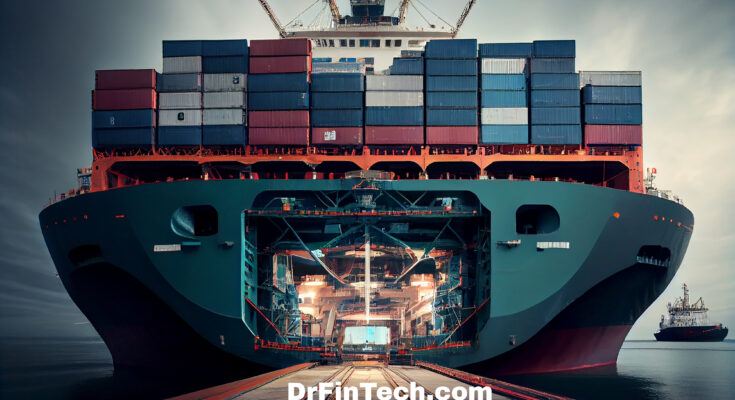Introduction
International firms may develop and expand by trading with foreign markets in today’s global economy. However, these prospects include hazards that might hurt a company’s exports. Businesses entering new markets or expanding globally must understand export hazards. This blog article will explain export market risk, its categories, how it impacts firms, and how to minimise it.
| I. Introduction II. What is Export Market Risk? III. Types of Export Market Risk A. Political Risk B. Economic Risk C. Legal Risk IV. How Does Export Market Risk Impact Businesses? V. Identifying and Assessing Export Market Risks VI. High-Risk Export Markets VII. Strategies for Mitigating Export Market Risks VIII. Export Insurance as a Protective Tool Against Risks IX. Frequently Asked Questions (FAQs) |
What is Export Market Risk?
Export market risk refers to the risks of trading internationally. It involves political instability, economic changes, and legal concerns that might hurt export operations. International market volatility and cross-border trade uncertainty pose significant dangers to businesses. Businesses may secure their operations and financial stability in global commerce by identifying export market risk and creating mitigation techniques.
Types of Export Market Risk
Businesses must consider many export market concerns. Some common ones are:
A. Political Risk
This relates to anticipated changes or occurrences in a foreign country’s political environment that might harm a business’s export activity. It might be civil unrest, terrorism, government corruption, asset expropriation without recompense, or abrupt diplomatic problems between countries.
A corporation that exports goods to a country with political unrest or demonstrations may encounter shipment delays or supply chain interruptions, resulting in financial losses.
B. Economic Risk
Economic risk, which refers to the volatility and swings in international markets, may have an impact on a company’s exports. Exchange rates may devalue currencies or raise inflation, making imported goods more costly.
For instance, importing raw materials from a nation with unpredictable economic conditions, high inflation, or import restrictions would increase production costs and affect competitive pricing tactics.
C. Legal Risk
Companies exporting may face legal issues such as intellectual property infringements or contract violations.
For instance, rejected shipments due to regulatory compliance requirements particular to importing nations would damage the exporter’s credibility and cost it money.
How Does Export Market Risk Impact Businesses?
Export market risks may bankrupt firms if not managed properly. Companies may stop operations due to political uncertainty in export markets, losing money. Economic risks like volatility and inflation can raise manufacturing costs, forcing firms to cut operating expenditures, which can affect product quality and price.
Due to legal concerns, litigation processes waste time and resources, reducing firm productivity and causing financial losses. These events show why organisations dealing abroad require risk management measures.
Identifying and Assessing Export Market Risks
Exporters must do due diligence to detect dangers. Before making export-related company choices, due diligence involves investigating and analysing external market conditions and internal capabilities. This requires extensive study on the target market’s political environment, economic conditions, trade regulations, and how these changes may effect their operations.
Additionally, working with local partners that know the export market well is beneficial. They can discuss legal difficulties and hazards they’ve encountered in that industry.
High-Risk Export Markets
Before exporting goods/services worldwide, enterprises should identify high-risk nations that might severely damage their exports. Identifying these markets is essential for developing mitigating solutions.
Politically unstable rising economies like Venezuela and Ukraine are high-risk export markets.
Countries under sanctions from other big economies, like North Korea, may have trouble trading or moving assets internationally.
Strategies for Mitigating Export Market Risks
Businesses entering high-risk export markets require careful planning and risk management. One method is to prepare alternative actions and operations plans for sudden embargo restrictions, such as spot negotiation tactics to re-evaluate product specifications instead of expert activities’ performance analysis to deliver timely product shipments.
Companies must also maintain good relations and watch out for trade behaviour in politically vulnerable export markets by forming successful partnerships with counterparty organisations.
Export Insurance as a Protective Tool Against Risks
Export insurance protects enterprises against overseas trade hazards. This includes loss or destruction of products, importer non-payment, buyer bankruptcy, or unexpected political developments that hamper exports.
Export insurance protects firms against market uncertainty. It also offers them confidence in international trading and lets them focus on their core activities without worrying about external factors.
Frequently Asked Questions (FAQs)
A. How can I assess foreign market political risk before exporting?
Before exporting, corporations might examine a foreign market’s political climate and stability to assess political risk. Local partners or government bodies knowledgeable with that nation can also advise them.
B. What legal concerns do exporters face?
Intellectual property infringements, product safety rules, bribery and corruption laws, import/export limitations for sensitive commodities like weapons or dual-use items, etc. are regular export market legal hazards.
C. How can my firm avoid export market economic risk?
Companies should actively monitor target country currency rates and inflation to mitigate export market economic risk. Hedging or consulting financial institutions knowledgeable of the target market’s economy are other options.
D. How does due diligence reduce export market risks?
Due diligence is critical for organisations entering overseas markets because it identifies dangers. Due diligence helps firms create a risk mitigation strategy.
E. Apart from insurance, how can export market risks be mitigated?
In addition to exporting insurance, firms may reduce risks by diversifying their export markets, having strong connections with local partners that understand the target market’s characteristics, and creating backup plans.
Conclusion
Exporting goods and services abroad can boost business growth. These possibilities have hazards that might harm a company’s operations and finances. Protecting firms’ worldwide trade interests requires understanding export market risk categories and taking steps to identify, analyse, and mitigate them. Before expanding into new countries, companies should get export insurance, study, and monitor overseas markets.



